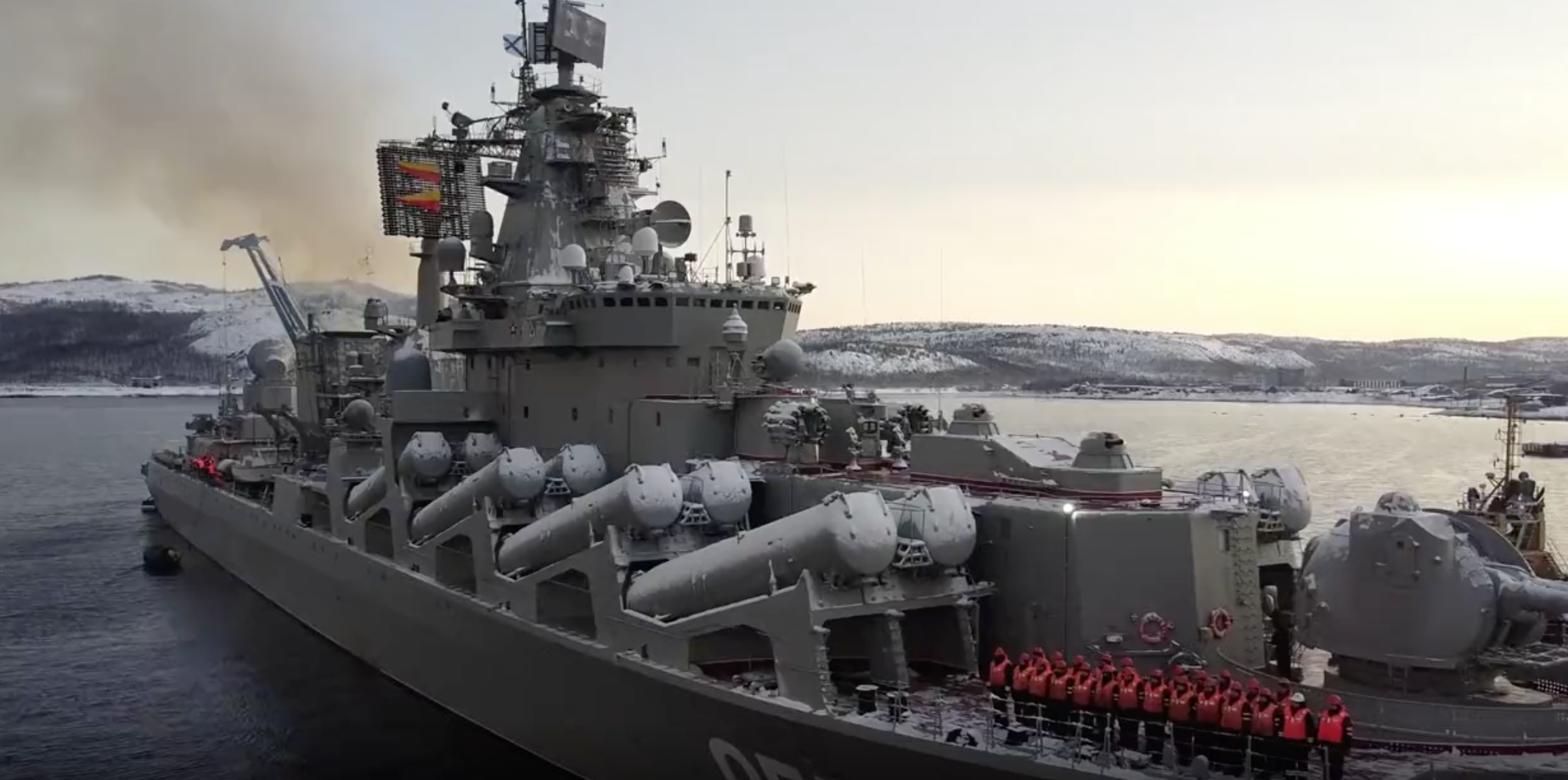
This post has been updated to include an updated position of the first three ships in the Russian Navy amphibious task force.
A group of three Russian warships capable of landing tanks and troops ashore now in the Black Sea, as the Russian Navy begins to mass ships in the Mediterranean, according to Tuesday photos of the warships provided to USNI News.
Three Ropucha-class tank landing ships – RFS Minsk (127), RFS Korolev (130) and RFS Kaliningrad (102) – entered the Black Sea, as seen in photos from ship spotter Yörük Işık. The same photographer recorded the ships entering the Dardanelles Strait on Tuesday morning.
The 4,080-ton amphibs are each capable of landing 10 main battle tanks and about 350 troops ashore.
The three ships were part of the six-amphibious warship task group assembled from the Baltic and North fleets that pulled into the Russian naval base in Syria as part of a series of naval exercises, according to a report in the state-run TASS news service.
The task group included the Ropcha-class amphibs RTS Georgy Pobedonosets (016) and RTS Olenegorsky Gornyak (012) and the 6,600-ton Ivan Gren-class RTS Pyotr Morgunov. Pyotr Morgunov is capable of landing 13 main battle tanks and 300 troops as well as field two attack helicopters. Naval News reported that Kilo-class diesel-electric attack submarine RTS Rostov-na-Donu (B-237) is part of the task group.

Last month, ships from the group departed from the Russian exclave in Kaliningrad in the Baltic Sea near Sweden. Maneuvers close to Swedish waters prompted Stockholm to send a military force to reinforce the island of Gotland, according to the Götebirgs-Posten newspaper.
All seven are due in the Black Sea by the end of the week, according to Naval News.
A U.S. destroyer is operating near the task group in the North Aegean Sea, a U.S. defense official confirmed to USNI News on Tuesday.
Meanwhile, Russia has also sent two 11,500-ton guided-missile Slava-class cruisers and escorts to the Mediterranean. On Feb. 2, the Pacific Fleet-based Slava-class RFS Varyag (011), Udaloy-class destroyer RTS Admiral Tributs (564) and fleet oiler Boris Butoma entered the Eastern Mediterranean from the Suez Canal.
The Northern Fleet flag ship, the Slava-class cruiser RTS Marshal Ustinov (055), had been operating off the Irish coast last week. Ship spotters reported it had entered the Mediterranean Sea on Monday via the Automatic Identification System (AIS). The Russian fleet had planned exercises off the coast of Ireland but were relocated after an outcry from Irish fisherman. The Russian Navy’s third Slava-class ship, RTS Moskva (121), is based in the Black Sea.
The Russian Ministry of Defense says the Kremlin has deployed 140 ships across the globe as part of a linked series of exercises.

“The drills will cover the seas adjacent to Russian territory and also operationally important areas of the world ocean. Separate drills will run in the Mediterranean, North and Okhotsk Seas, in the northeastern Atlantic and the Pacific Ocean,” reported TASS.
The Russian Navy deployments come in tandem with a months-long Russian troop buildup of more than 100,000 at the borders of Ukraine. U.S. officials told reporters last week the build-up was about 70 percent of the force Russia would need to for an initial push to invade Ukraine.
Some analysts have said that an extended invasion would involve Russian forces taking Odessa, Ukraine’s largest port city on the Black Sea.
“If Russia’s objectives include denying Ukraine future access to the sea, it will have to seize Odessa. Some predict that this would be accomplished via amphibious and airborne landings near Odessa, which link up with mechanized forces approaching from the east,” Seth Jones with the Center for Strategic and International Studies wrote last month.

In response, the U.S. has kept the Harry S. Truman Carrier Strike Group in the Mediterranean Sea and had the CSG drill with other allied ships during the NATO-led Neptune Strike exercise, which ended on Feb. 4.
In addition to carrier USS Harry S. Truman (CVN-75), Carrier Air Wing 1 and the strike escorts, Neptune Strike featured Italian Navy F-35B aircraft carrier ITS Cavour (CVH-550). The group also operated with French Navy carrier FS Charles de Gaulle (R 91).





